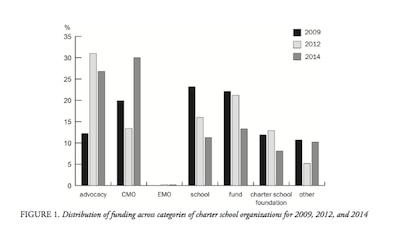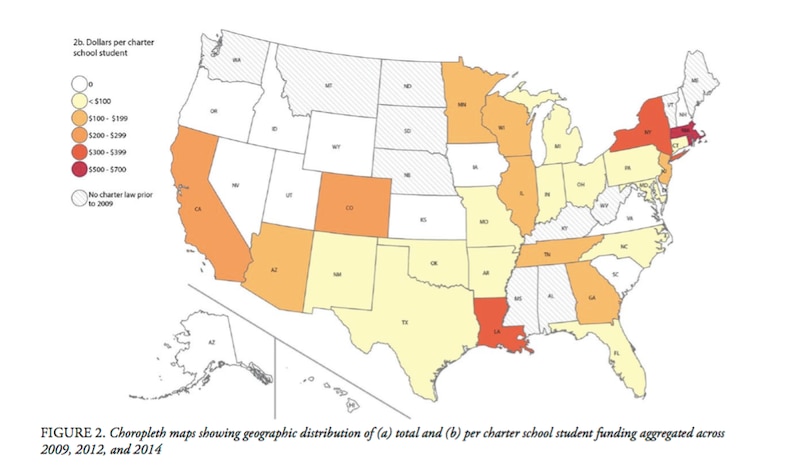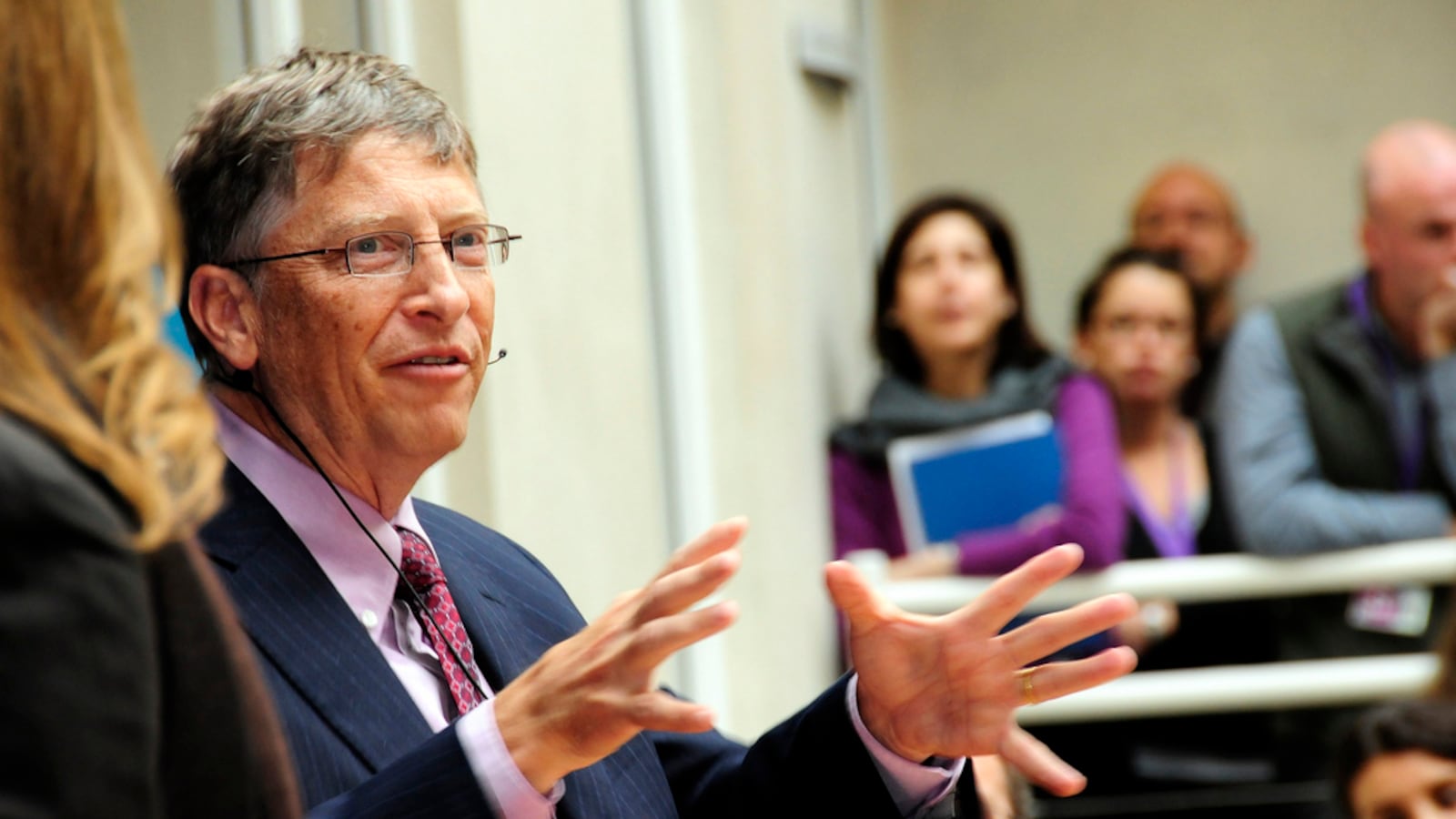Wealthy charter school backers have directed most of their money to a select number of states, particularly ones where charter schools are better at raising test scores, according to a new study.
The research also finds that foundations are sending a larger share to charter school networks and a smaller share to stand-alone charters — echoing complaints from independent charter school leaders that they’ve gotten short shrift from funders.
The concentration of funding, researchers Joseph Ferrare and Renee Setari write, gives “foundations considerable leverage.” It has also “enabled some charter management organizations (e.g., KIPP) and subsystems (e.g., New Orleans) to expand the supply of charter schools at a dramatic rate.”
The researchers combed through multiple years of spending from 15 education philanthropies that have supported charter schools, including major donors like the Gates and Walton foundations and local ones like the Kauffman Foundation in Kansas City and the Joyce Foundation in Chicago. (Chalkbeat is funded in part by the Gates, Joyce, and Walton foundations.)
The paper, published in the peer-reviewed journal Educational Researcher, looks at funding in 2009, 2012, and 2014.
Who gets the money? CMOs, more and more
The philanthropies fund a variety of efforts to bolster charters, from advocacy organizations to individual schools. How that money is distributed has changed over time.
More recently, charter management organizations have gotten a much larger share, while stand-alone charters have gotten a lot less.

Charter school funds — sometimes described as “venture philanthropies” — that distribute money to schools or networks saw their funding decline between 2012 and 2014. Two well-funded outliers are the Charter School Growth Fund, which the study notes received $45.6 million across the three years — more grant funding than any other organization — and the NewSchools Venture Fund.
For-profit charter networks, or EMOs, received virtually no philanthropic support.
Where does the money go? A few states
The funders studied did not distribute money evenly across states — some got a lot, while others got nothing.
Unsurprisingly, populous states like New York and California, where many major funders are physically located, got the most raw support. Ten states where charter laws were on the books, though usually with small numbers of charter schools, got zero resources from the 15 philanthropies.
“The geographic distribution of the funds awarded was highly concentrated, with 80 percent of the total funding across all three years being awarded to organizations in only 10 of the 39 states and District of Columbia,” the study says.
On a per-student basis, some states continued to come out far ahead. Charter groups and charter schools in Rhode Island and Massachusetts took in more than $500 per charter student, while Louisiana and New York also drew large support.

What kinds of places get money?
Ferrare and Setari also find that states where research finds charter schools are more effective — as measured by test score improvement relative to district schools — seem to draw more donors.
The study also finds that philanthropies tended to converge in states that won funding through Race to the Top, the Obama-era initiative that encouraged states to become more hospitable to charter schools. “Intentional or not, the federal government and foundations worked in concert to advance charter school reform,” the study says.
The fact that philanthropies seem to focus on states where charter sectors are larger or more effective, or both, could be seen as philanthropists trying to get the most bang for their buck. But the study points out that that this leaves other places behind.
It’s also possible that the size and effectiveness of certain charter sectors is partially because of donor support, not the other way around.
“We can say that the money is following the evidence,” said Ferrare. “On the other hand, there are some concerns because it does suggest that those [states] who aren’t doing well are in some ways destined to continue that way.”


